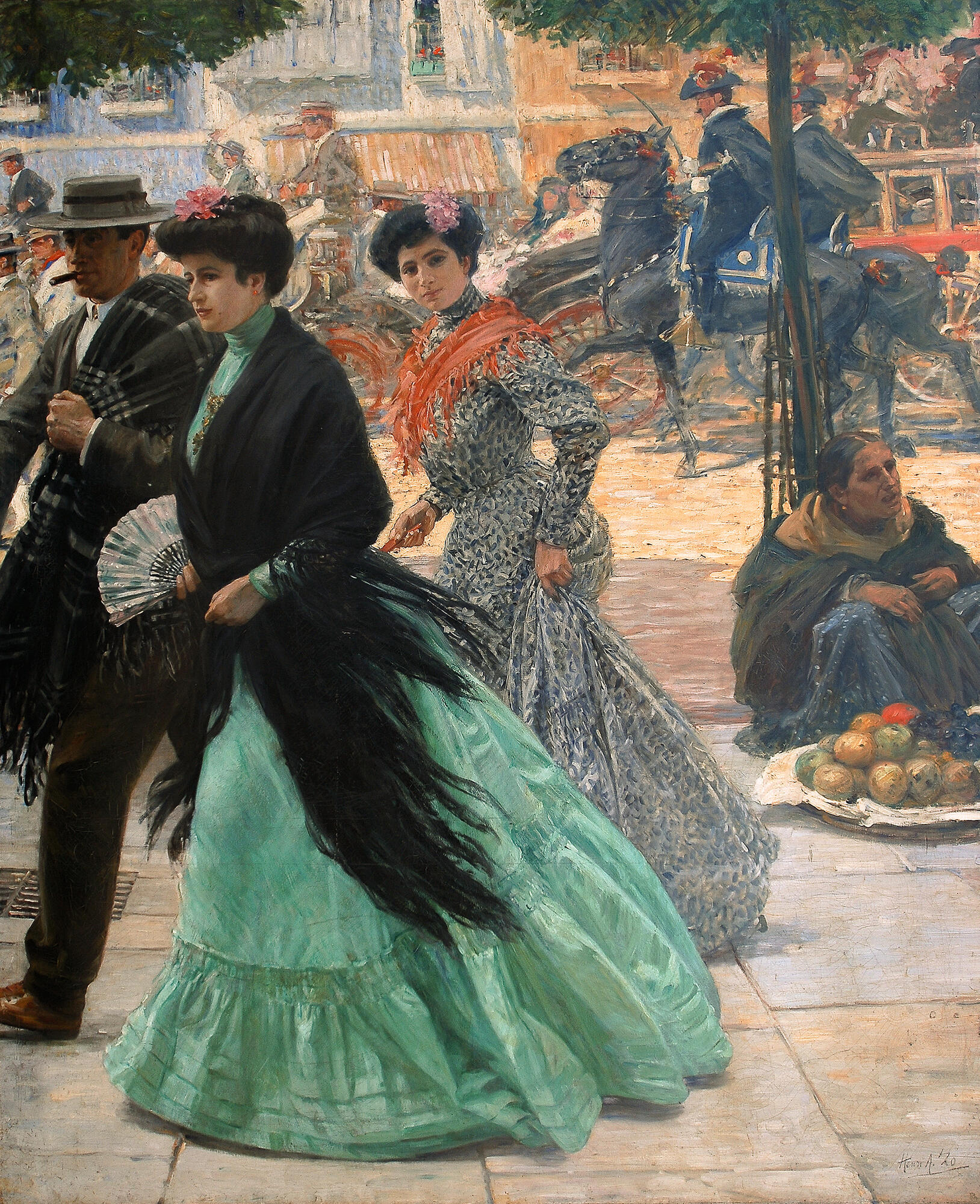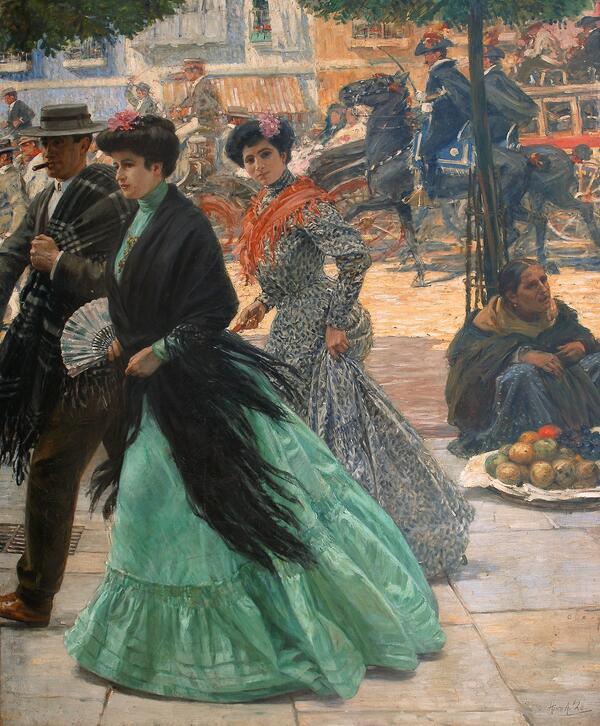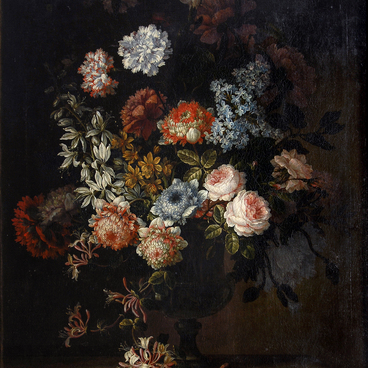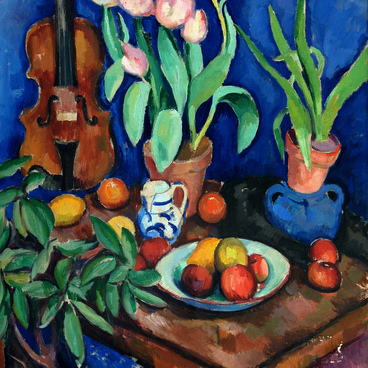Henri-Achille Zo is a French artist and illustrator, born in 1873 in Bayonne in southwestern France. His father, Achilles Zo, was also an artist who directed the School of Fine Arts in Bordeaux. In 1894, Henri entered the Higher National School of Fine Arts in Paris, where he studied with the famous portrait painter Léon Bonnat and the history painter Albert Maignan. As early as in 1897, he began to exhibit his works at the Salon of French Artists, in 1898, he became a member of the Society of French Artists, and in 1905 — the winner of the National Prize. He was also the Knight of the Legion of Honor.
Henri-Achille Zo and his father are considered the founders of the “Bayonne school”. Henri Zo painted scenes from the life of the people of Spain, southeastern France, the Basque Country, in particular, related to bullfighting, folk festivals, and sports games. The works are kept in the museums of Bayonne, Bucharest, and Tourcoing.
“Before the Bullfight” from the collection of the Primorye State Art Gallery, painted in 1916, shows the artist’s commitment to Impressionism. This is manifested in the composition (as if capturing a “fleeting moment of life”), in the emphasized dynamism, and the way the background image is made — blurred, painted in separate strokes.
The group of main characters — two women and a man — is, contrary to academic tradition, shifted to the left of the center; moreover, they are heading away from the space of the picture. Carriages and pedestrians are moving in the same direction in the background. A single motionless figure of a fruit vendor sitting under a tree only emphasizes this universal vector of aspirations — to bullfighting.
Corrida (bullfighting) is a traditional mass entertainment event in Spain; “corrida de toros” is the Spanish for “bull run”. At the same time, this is a very important cultural and artistic phenomenon. References to bullfighting or characters associated with it can be found in the works of many writers, including playwrights Lope de Vega and Calderon, poet Garcia Lorca, let alone Hemingway’s well-known fascination with corrida. Goya and Picasso, among others, dedicated their works to bullfighting.
Henri-Achille Zo and his father are considered the founders of the “Bayonne school”. Henri Zo painted scenes from the life of the people of Spain, southeastern France, the Basque Country, in particular, related to bullfighting, folk festivals, and sports games. The works are kept in the museums of Bayonne, Bucharest, and Tourcoing.
“Before the Bullfight” from the collection of the Primorye State Art Gallery, painted in 1916, shows the artist’s commitment to Impressionism. This is manifested in the composition (as if capturing a “fleeting moment of life”), in the emphasized dynamism, and the way the background image is made — blurred, painted in separate strokes.
The group of main characters — two women and a man — is, contrary to academic tradition, shifted to the left of the center; moreover, they are heading away from the space of the picture. Carriages and pedestrians are moving in the same direction in the background. A single motionless figure of a fruit vendor sitting under a tree only emphasizes this universal vector of aspirations — to bullfighting.
Corrida (bullfighting) is a traditional mass entertainment event in Spain; “corrida de toros” is the Spanish for “bull run”. At the same time, this is a very important cultural and artistic phenomenon. References to bullfighting or characters associated with it can be found in the works of many writers, including playwrights Lope de Vega and Calderon, poet Garcia Lorca, let alone Hemingway’s well-known fascination with corrida. Goya and Picasso, among others, dedicated their works to bullfighting.



